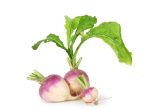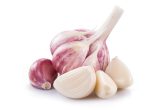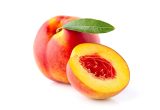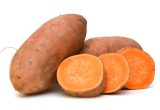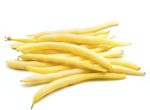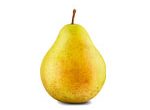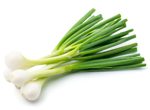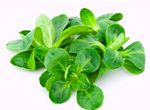Cucumber

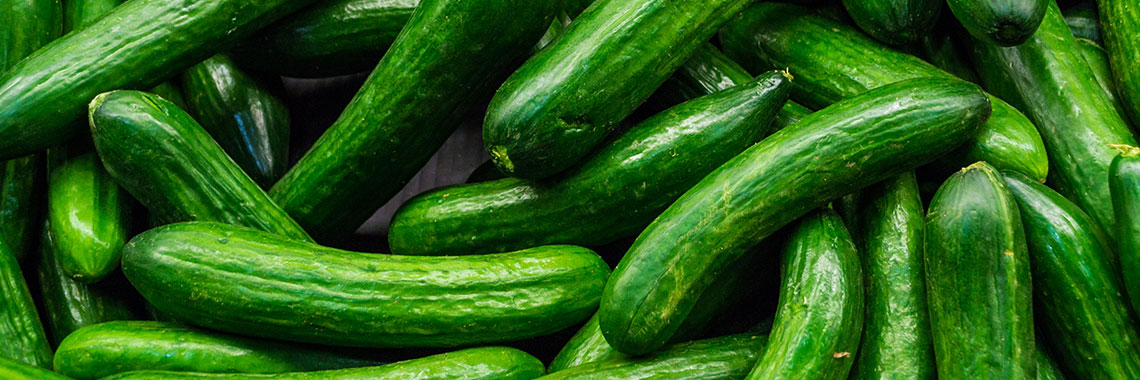
Description
- The cucumber (Cucumis sativus L.) belongs to the Curcubitaceae family.
- The cucumber is a fruit that has been one of the most important crops in the world for over 3,000 years (Chen, 2014). It is commonly consumed as a vegetable.
PHYSICAL AND ORGANOLEPTIC CHARACTERISTICS
- The fruits are usually harvested one to two weeks after flowering (Chen, 2014).
- During fruit development, deep veins along the length cover the surface of the fruit and spaced, dense spines are randomly scattered relative to the veins (Chen, 2014).
- Cucumber is a fruit with a firm texture (Miao, 2019).
- The pigments responsible for the colour of cucumber are chlorophylls a and b and carotenoids (Shan, 2020).
- The odour of cucumber is characterised by the presence of 2-acetyl-1-pyrroline, aldehydes and alcohols (Pramnoi, 2013; Wan, 2013).
- The sweetness and sugary taste of cucumber is provided by soluble sugars and in particular fructose, while its astringency comes from tannin compounds (Miao, 2019).
- Catechins (Cs) are the main astringent tannins that affect the oral sensory quality of cucumber fruits (Xu, 2019).
- The aroma profile of cucumber is characterised by short and medium chain alcohols and aldehydes, carotenoid and monoterpene derivatives, and sesquiterpenes as well as benzoids (Miao, 2019).
COMPOSITION CHARACTERISTICS (excluding macronutrients, vitamins and minerals)
- Cucumbers contain high levels of cucurbitacins and their derivatives (triterpenoids) and flavonoids (apigenin, luteolin, quercetin and kaempferol) (Murad, 2016).
- One study found that cucumber skin extract contained the highest levels of phenolic compounds and flavonoids, as well as higher antioxidant properties (Yunusa, 2019). These results suggest that consuming cucumber with the skin on may offer more optimal health benefits than its peeled counterpart.
- Nigerian researchers studied the effect of cucumber consumption on plasma creatinine (Cr), urea, uric acid (Ua) and blood glucose in young students. They observed a hypoglycaemic effect following cucumber consumption with no adverse effect on the kidneys, which may be useful in the prevention and management of type 2 diabetes (Ogbodo, 2017).
- Catechins (Cs), present in cucumber, have potential health benefits, particularly in improving chronic diseases. Gallocatechin is the major Cs in cucumber and is present at significantly higher concentrations in the peel than in the flesh (Xu, 2019).
RAW
The following values are approximate and depend on variety, season, ripeness, cultivation conditions, etc. Cucumbers are low in energy* as they provide an average of 14.70 calories (kcal) per 100 g, i.e. 61.60 kJ. According to the Ciqual 2020 table, cucumbers are among the least calorific vegetables. On average, one cucumber weighs 400 to 500 g, which represents an energy intake of approximately 58.80 to 73.50 kcal.
COMPOSITION TABLES
For each nutrient, the tables provide information on the content, minimum and maximum values, as well as the percentage of the Dietary Reference Values (DRVs) for 100 g net of cucumber (pulp, raw).
*Regulation (EC) No 1924/2006 of the European Parliament and of the Council of 20 December 2006 on nutrition and health claims made on foods.
MACRONUTRIENTS
| Constituent (g) | Average content |
Min-Max per 100g |
DRV% |
|---|---|---|---|
| Water | 96,30 | 96,10 - 97,20 | - |
| Fibers | 0,80 | 0,70 - NC | - |
| Carbohydrates | 2,23 | 0 - NC | 0,86 |
| Sugars | 1,80 | 1,38 - NC | 2 |
| Lipids | < 0,50 | 0,10 - NC | - |
| Saturated fat | < 0,01 | NC - 0,086 | - |
| Protein | 0,56 | NC - 0,60 | 1,12 |
| Constituent (g) | Amount | Min-Max | DRV% |
|---|---|---|---|
| Water | Ciqual 2020 (valeur issue des analyses Ciqual-Aprifel 2017) | - | - |
| Fibers | Ciqual 2020 (valeur issue des analyses Ciqual-Aprifel 2017) | - | - |
| Carbohydrates | Ciqual 2020 | - | Règlement (UE) N°1169/2011 du parlement Européen et du conseil du 25 octobre 2011 |
| Sugars | Ciqual 2020 (valeur issue des analyses Ciqual-Aprifel 2017) | - | Règlement (UE) N°1169/2011 du parlement Européen et du conseil du 25 octobre 2011 |
| Lipids | Ciqual 2020 (valeur issue des analyses Ciqual-Aprifel 2017) | - | Règlement (UE) N°1169/2011 du parlement Européen et du conseil du 25 octobre 2011 |
| Saturated fat | Ciqual 2020 (valeur issue des analyses Ciqual-Aprifel 2017) | - | Règlement (UE) N°1169/2011 du parlement Européen et du conseil du 25 octobre 2011 |
| Protein | Ciqual 2020 (valeur issue des analyses Ciqual-Aprifel 2017) | - | Règlement (UE) N°1169/2011 du parlement Européen et du conseil du 25 octobre 2011 |
Zoom on carbohydrates
- The carbohydrate content of cucumbers (2.23 g per 100 g) is lower than the average amount found in raw vegetables (4.45 g per 100 g).
- Cucumbers are low in sugar* as they contain less than 5 g per 100 g.
Zoom on fibres
- The fibre content of cucumbers (0.80 g per 100 g) is lower than the average amount found in raw vegetables (2.43 g per 100 g).
Zoom on proteins
- The protein content of cucumbers (0.56 g per 100 g) is lower than the average amount found in raw vegetables (1.87 g per 100 g).
Zoom on lipids
- Cucumbers are fat-free*, as they contain less than 0.5 g of fat per 100 g.
*Regulation (EC) No 1924/2006 of the European Parliament and of the Council of 20 December 2006 on nutrition and health claims made on foods.
MINERALS AND TRACE ELEMENTS
| Constituent | Average content |
Min-Max per 100g |
DRV% |
|---|---|---|---|
| Calcium (mg) | 16 | 7 - 23 | 2 |
| Chloride (mg) | < 20 | NC - 61 | - |
| Copper (mg) | 0,02 | 0 - 0,16 | 2 |
| Iron (mg) | 0,14 | 0,02 - 0,30 | 1 |
| Iodine (µg) | < 20 | 5 - NC | - |
| Magnesium (mg) | 8,90 | 7 - 16 | 2,37 |
| Manganese (mg) | 0,11 | 0,008 - 0,14 | 5,50 |
| Phosphorus (mg) | 25 | 16 - 35 | 3,57 |
| Potassium (mg) | 140 | 94 - 241 | 7 |
| Selenium (µg) | < 20 | - | - |
| Sodium (mg) | < 5 | 1 - 6,50 | - |
| Zinc (mg) | 0,13 | 0,09 - 0,26 | 1,30 |
| Constituent | Amount | Min-Max | DRV% |
|---|---|---|---|
| Calcium (mg) | Ciqual 2020 (valeur issue des analyses Ciqual-Aprifel 2017) | - | Règlement (UE) N°1169/2011 du parlement Européen et du conseil du 25 octobre 2011 |
| Chloride (mg) | Ciqual 2020 (valeur issue des analyses Ciqual-Aprifel 2017) | - | Règlement (UE) N°1169/2011 du parlement Européen et du conseil du 25 octobre 2011 |
| Copper (mg) | Ciqual 2020 (valeur issue des analyses Ciqual-Aprifel 2017) | - | Règlement (UE) N°1169/2011 du parlement Européen et du conseil du 25 octobre 2011 |
| Iron (mg) | Ciqual 2020 (valeur issue des analyses Ciqual-Aprifel 2017) | - | Règlement (UE) N°1169/2011 du parlement Européen et du conseil du 25 octobre 2011 |
| Iodine (µg) | Ciqual 2020 (valeur issue des analyses Ciqual-Aprifel 2017) | - | Règlement (UE) N°1169/2011 du parlement Européen et du conseil du 25 octobre 2011 |
| Magnesium (mg) | Ciqual 2020 (valeur issue des analyses Ciqual-Aprifel 2017) | - | Règlement (UE) N°1169/2011 du parlement Européen et du conseil du 25 octobre 2011 |
| Manganese (mg) | Ciqual 2020 (valeur issue des analyses Ciqual-Aprifel 2017) | - | Règlement (UE) N°1169/2011 du parlement Européen et du conseil du 25 octobre 2011 |
| Phosphorus (mg) | Ciqual 2020 (valeur issue des analyses Ciqual-Aprifel 2017) | - | Règlement (UE) N°1169/2011 du parlement Européen et du conseil du 25 octobre 2011 |
| Potassium (mg) | Ciqual 2020 (valeur issue des analyses Ciqual-Aprifel 2017) | - | Règlement (UE) N°1169/2011 du parlement Européen et du conseil du 25 octobre 2011 |
| Selenium (µg) | Ciqual 2020 (valeur issue des analyses Ciqual-Aprifel 2017) | - | Règlement (UE) N°1169/2011 du parlement Européen et du conseil du 25 octobre 2011 |
| Sodium (mg) | Ciqual 2020 (valeur issue des analyses Ciqual-Aprifel 2017) | - | - |
| Zinc (mg) | Ciqual 2020 (valeur issue des analyses Ciqual-Aprifel 2017) | - | Règlement (UE) N°1169/2011 du parlement Européen et du conseil du 25 octobre 2011 |
Zoom on minerals and trace elements
- The trace element best represented in cucumbers is potassium. It represents 7% of DRVs, i.e. 140 g per 100 g.
- The other minerals and trace elements are present in cucumbers in quantities representing less than 6% of DRVs.
VITAMINS
| Constituent | Average content |
Min-Max per 100g |
DRV% |
|---|---|---|---|
| Provitamin A Beta-carotene (µg) | 24,30 | NC - 31 | - |
| Vitamin A equivalent (µg) | 4,05 | NC - 5,17 | 0,51 |
| Vitamin B1 (mg) | < 0,015 | NC - 0,031 | - |
| Vitamin B2 (mg) | < 0,01 | NC - 0,025 | - |
| Vitamin B3 (mg) | < 0,10 | 0,037 - 0,11 | - |
| Vitamin B5 (mg) | 0,15 | NC - 0,24 | 2,50 |
| Vitamin B6 (mg) | 0,042 | NC - 0,051 | 3 |
| Vitamin B9 (µg) | 7,20 | NC - 14 | 3,60 |
| Vitamin C (mg) | 3,52 | 3,20 - 3,73 | 4,40 |
| Vitamin E (mg) | < 0,08 | 0,01 - 0,09 | - |
| Vitamin K1 (µg) | 2,75 | 1,70 - 15 | 3,67 |
| Constituent | Amount | Min-Max | DRV% |
|---|---|---|---|
| Provitamin A Beta-carotene (µg) | Ciqual 2020 (valeur issue des analyses Ciqual-Aprifel 2017) | - | - |
| Vitamin A equivalent (µg) | Calcul à partir de la valeur Provitamine A Béta-carotène* | - | Règlement (UE) N°1169/2011 du parlement Européen et du conseil du 25 octobre 2011 |
| Vitamin B1 (mg) | Ciqual 2020 (valeur issue des analyses Ciqual-Aprifel 2017) | - | Règlement (UE) N°1169/2011 du parlement Européen et du conseil du 25 octobre 2011 |
| Vitamin B2 (mg) | Ciqual 2020 (valeur issue des analyses Ciqual-Aprifel 2017) | - | Règlement (UE) N°1169/2011 du parlement Européen et du conseil du 25 octobre 2011 |
| Vitamin B3 (mg) | Ciqual 2020 (valeur issue des analyses Ciqual-Aprifel 2017) | - | Règlement (UE) N°1169/2011 du parlement Européen et du conseil du 25 octobre 2011 |
| Vitamin B5 (mg) | Ciqual 2020 (valeur issue des analyses Ciqual-Aprifel 2017) | - | Règlement (UE) N°1169/2011 du parlement Européen et du conseil du 25 octobre 2011 |
| Vitamin B6 (mg) | Ciqual 2020 (valeur issue des analyses Ciqual-Aprifel 2017) | - | Règlement (UE) N°1169/2011 du parlement Européen et du conseil du 25 octobre 2011 |
| Vitamin B9 (µg) | Ciqual 2020 (valeur issue des analyses Ciqual-Aprifel 2017) | - | Règlement (UE) N°1169/2011 du parlement Européen et du conseil du 25 octobre 2011 |
| Vitamin C (mg) | Ciqual 2020 (valeur issue des analyses Ciqual-Aprifel 2017) | - | Règlement (UE) N°1169/2011 du parlement Européen et du conseil du 25 octobre 2011 |
| Vitamin E (mg) | Ciqual 2020 | - | Règlement (UE) N°1169/2011 du parlement Européen et du conseil du 25 octobre 2011 |
| Vitamin K1 (µg) | Ciqual 2020 (valeur issue des analyses Ciqual-Aprifel 2017) | - | Règlement (UE) N°1169/2011 du parlement Européen et du conseil du 25 octobre 2011 |
Zoom on vitamins
- Cucumbers contain vitamins representing less than 5% of DRVs.
*Calculation made: Beta-Carotene / 6 + retinol
POLYPHENOLS
Constituent
(mg)
Average content
Min-Max
per 100mg
Flavonoids
(mg)
0,10
0 - 0,58
of which
Flavonols
(mg)
0,10
0 - 0,58
Lignanes
(mg)
3,86
0 - 6,80
Total polyphenols
3,96
0 - 7,38
Constituent
(mg)
Amount
Min-Max
Flavonoids
Phénol-Explorer version 3.6 Méthode utilisée : Chromatographie
-
of which
Flavonols
Phénol-Explorer version 3.6 Méthode utilisée : Chromatographie
-
Lignanes
Phénol-Explorer version 3.6 Méthode utilisée : Chromatographie
-
Total polyphenols
Phénol-Explorer version 3.6 Méthode utilisée : Chromatographie
-
| Constituent (mg) | Average content |
Min-Max per 100mg |
|---|---|---|
| Flavonoids (mg) | 0,10 | 0 - 0,58 |
| of which Flavonols (mg) | 0,10 | 0 - 0,58 |
| Lignanes (mg) | 3,86 | 0 - 6,80 |
| Total polyphenols | 3,96 | 0 - 7,38 |
| Constituent (mg) | Amount | Min-Max |
|---|---|---|
| Flavonoids | Phénol-Explorer version 3.6 Méthode utilisée : Chromatographie | - |
| of which Flavonols | Phénol-Explorer version 3.6 Méthode utilisée : Chromatographie | - |
| Lignanes | Phénol-Explorer version 3.6 Méthode utilisée : Chromatographie | - |
| Total polyphenols | Phénol-Explorer version 3.6 Méthode utilisée : Chromatographie | - |
Zoom on polyphenols
- Polyphenols are substances with an antioxidant effect.
- Cucumbers contain mostly flavonoids, in the form of flavonols, according to chromatographic analysis.
Nutrition and health claims
According to the definitions of nutrition claims as set out in Regulation (EC) No 1924/2006 on nutrition and health claims, and in view of the composition of cucumber, the following claims may be used:
NUTRITION CLAIMS OF CUCUMBER
- Low in energy (100 g of cucumbers provide less than 40 kcal)
- Fat-free (100 g of cucumber contain less than 0.5 g of fat)
- Low in sugar (100 g of cucumber contain less than 5 g of sugar)
References
- Agence nationale de sécurité sanitaire de l’alimentation, de l’environnement et du travail. Table de composition nutritionnelle des aliments Ciqual 2020. Consultée le 20/08/2020 depuis le site internet Ciqual https://ciqual.anses.fr/
- Chen C, Liu M, Jiang L, Liu X, Zhao J, Yan S, Yang S, Ren H, Liu R, Zhang X. Transcriptome profiling reveals roles of meristem regulators and polarity genes during fruit trichome development in cucumber (Cucumis sativus L.). J Exp Bot. 2014;65(17):4943-58.
- Miao L, Di Q, Sun T, Li Y, Duan Y, Wang J, Yan Y, He C, Wang C, Yu X. Integrated Metabolome and Transcriptome Analysis Provide Insights into the Effects of Grafting on Fruit Flavor of Cucumber with Different Rootstocks. Int. J. Mol. Sci. 2019;20:3592.
- Murad H, Nyc MA. Evaluating the potential benefits of cucumbers for improved health and skin care. Journal of Aging Research & Clinical Practice. 2016;5(3):139-41.
- Ogbodo EC, Ezeugwunne IP, Analike RA, Ezeodili VK, Egbe JU, Obiorah MO, Aguta UE, Madukwe DUP, Nwanko JC, Onah CE, Ugwu MC, Meludu SC. Effect of cucumber consumption on plasma creatinine, urea, uric acid and glucose level in apparently healthy students of college of health sciences, Nnamdi Azikiwe university, Nnewi campus, Anambra state, Nigeria. International Journal of Basic, Applied and Innovative Research. 2017;6(1):2384-96.
- Neveu V, Perez-Jiménez J, Vos F, Crespy V, du Chaffaut L, Mennen L, Knox C, Eisner R, Cruz J, Wishart D, Scalbert A. (2010) Phenol-Explorer: an online comprehensive database on polyphenol contents in foods. Database, doi: 10.1093/database/bap024. Full text (free access)
- Pramnoi P, Somta P, Chankaew S, Juwattanasomran R, Srinives P. A single recessive gene controls fragrance in cucumber (Cucumis sativus L.). J Genet. 2013;92(1):147-9.
- Règlement (CE) N° 1924/2006 du Parlement européen et du Conseil du 20 décembre 2006 concernant les allégations nutritionnelles et de santé portant sur les denrées alimentaires.
- Règlement (UE) N°432/2012 de la Commission du 16 mai 2012 établissant une liste des allégations de santé autorisées portant sur les denrées alimentaires, autres que celles faisant référence à la réduction du risque de maladie ainsi qu’au développement et à la santé infantiles.
- Règlement (UE) n°1169/2011 du Parlement européen et du Conseil du 25 octobre 2011 concernant l’information des consommateurs sur les denrées alimentaires, modifiant les règlements (CE) n°1924/2006 et (CE) n°1925/2006 du Parlement européen et de Conseil et abrogeant la directive 87/250/CEE de la Commission, la directive 90/496/CEE du Conseil, la directive 1999/10/CE de la Commission, la directive 200/13/CE du Parlement européen et du Conseil, les directives 2002/67/CE et 2008/5/CE de la Commission et le règlement (CE) n°608/2004 de la Commission.
- Shan N, Gan Z, Nie J, Liu H, Wang Z, Sui X. Comprehensive Characterization of Fruit Volatiles and Nutritional Quality of Three Cucumber (Cucumis sativus L.) Genotypes from Different Geographic Groups after Bagging Treatment. Foods. 2020;9:294.
- Wan XH, Chen SX, Wang CY, Zhang RR, Cheng SQ, Meng HW, Shen XQ. Isolation, expression, and characterization of a hydroperoxide lyase gene from cucumber. Int J Mol Sci. 2013;14(11):22082-101.
- Xu X, Tian H, He M, Gebretsadik K, Qi X, Xu Q, Chen X. Changes in catechin contents and expression of catechin biosynthesis-associated genes during early cucumber fruit development. Acta Physiol Plant. 2019;41:130.
- Yunusa AK, Dandago MA, Ibrahim SM, Abdullahi N, Rilwan A, Barde A. Total Phenolic Content and Antioxidant Capacity of Different Parts of Cucumber (Cucumis sativus L.). Acta Universitatis Cibiniensis. Series E: Food Technology. 2019;22(2).




